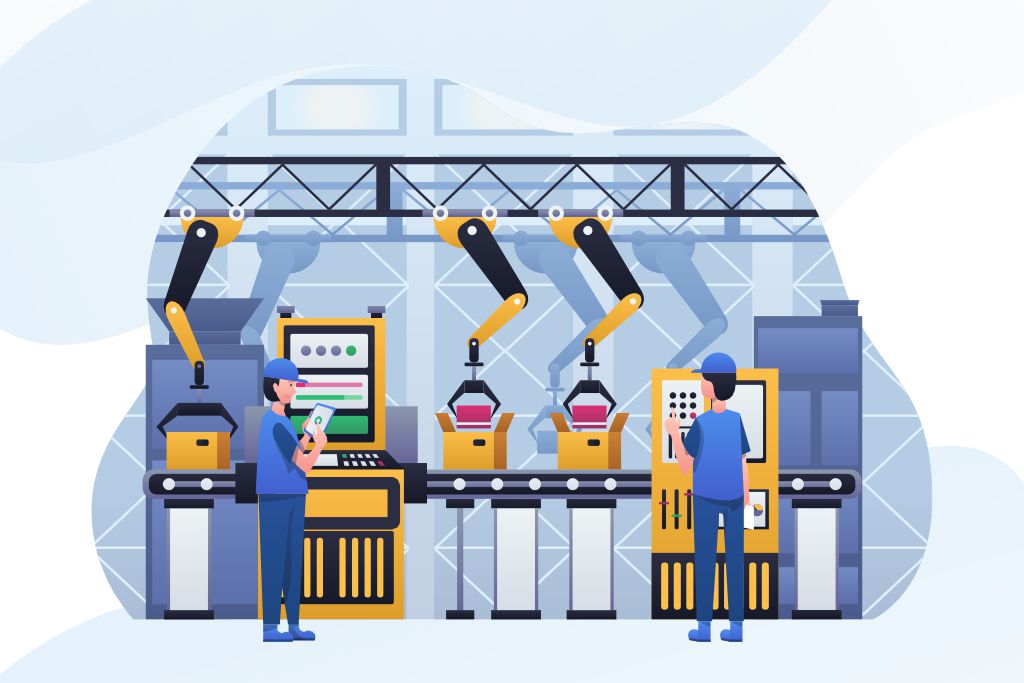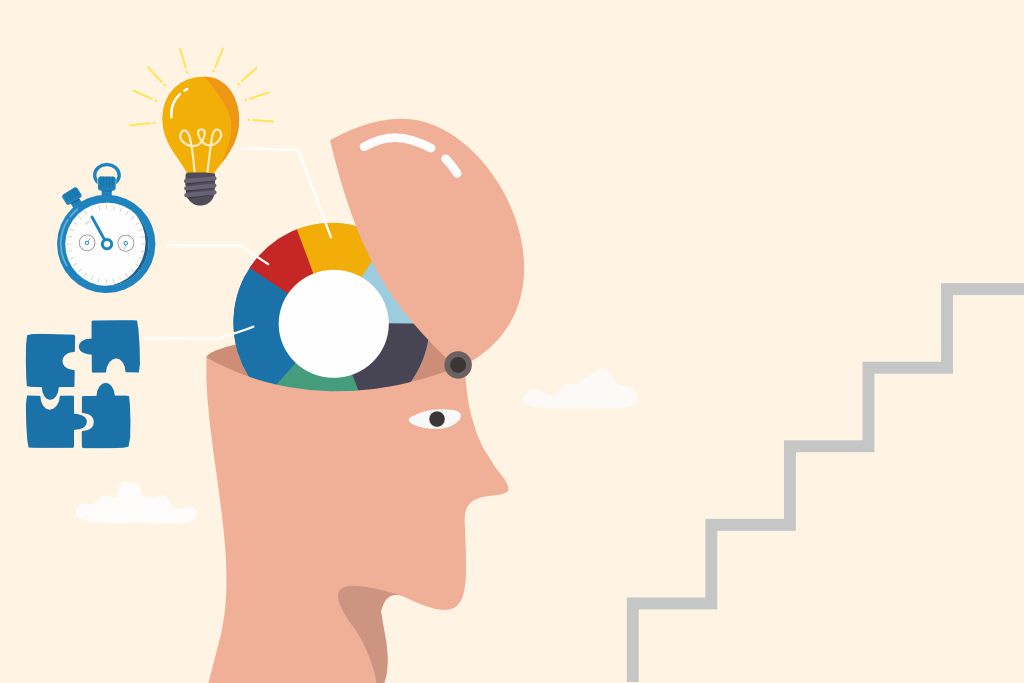Imagine a factory where machines, computers, and people all work together like a super-organized team. Industry 4.0 is all about making this teamwork smarter using modern technology.
Machines can now “talk” to each other using the internet (just like your phone or laptop connects to Wi-Fi).
- These machines also collect lots of information and share it instantly, so decisions can be made faster and more accurately.
- Robots can do some of the repetitive or dangerous jobs, while people focus on creative and problem-solving tasks.
- It helps companies make products faster, with better quality, and in a way that saves time and money.
In short, it’s like turning traditional factories into “smart factories” — kind of like giving them a brain upgrade.
History
Since the 1800s, the way we make things and do work has been completely transformed three times—each time thanks to big inventions. For example:
- First Revolution – Machines powered by steam helped people make goods much faster than by hand.
- Second Revolution – Electricity made mass production possible, like cars being made on assembly lines.
- Third Revolution – Computers and automation began to take over some of the work.
Now, we’re in the Fourth Industrial Revolution—also called Industry 4.0. This one is all about smart technology: things like artificial intelligence, robots that can think for themselves, machines that talk to each other through the internet, and factories that fix their own problems without a person stepping in.
So instead of just being faster or cheaper, work today is becoming more intelligent and connected. That’s why it’s called a revolution—it’s changing everything again.
Why should we adopt Industry 4.0?
Industry 4.0 is more focused on enhanced productivity, efficiency, and flexibility in manufacturing and other industries through the integration of advanced technologies. It helps in higher productivity, reduced cost, increased revenue, agile with process, better workplace, improved communication and customer satisfaction.
Industry 4.0 is like giving factories and businesses a smart upgrade. Imagine a super-connected, intelligent, and flexible production system where everything—from machines to people—is talking, sharing, and making decisions.
Here’s a simple explanation of the nine main technologies that make this happen:
- Big Data & AI – Think of this as the brain. Tons of information comes in—from machines, customers, even the weather—and AI quickly makes sense of it, helping businesses make better and faster decisions.
- Horizontal & Vertical Integration – It’s like making sure everyone in a team is perfectly connected. On one side, all machines and departments in a company talk to each other (horizontal). On the other, the top bosses and factory floors share info smoothly (vertical). No more miscommunication or data silos!
- Cloud Computing – This is where all the information is stored and shared, kind of like a magical online drive. It lets machines, people, and software work together from anywhere, in real time.
- Augmented Reality (AR) – With AR, workers wear special glasses or use phones to see instructions, data, or diagrams overlaid on real things—like a digital guide while fixing a machine.
- Industrial Internet of Things (IIoT) – Machines, tools, and even products have sensors that constantly send updates—just like fitness trackers do for people. This helps businesses know what’s happening at every moment.
- 3D Printing (Additive Manufacturing) – Instead of making things in big factories and shipping them, you can print parts or products exactly when and where you need them—even in unusual materials like metal or ceramic.
- Autonomous Robots – These are smart robots that do tasks on their own, like sorting products or helping in warehouses. They’re fast, efficient, and learn from what they do.
- Digital Twins – It’s like having a virtual copy of a real machine or system. This helps engineers spot problems, test ideas, and fix things before they even happen.
- Cybersecurity – Since everything’s connected, it’s important to protect systems from cyberattacks. Smart security systems keep data and machines safe and running.
NEA Life’s Human-Centric Assessments in the Age of Industry 4.0
Industry 4.0 is changing how we work, with more automation, smart machines, and digital tools.
- Because of this, we need a workforce that is ready for future jobs—with the right skills and mindset.
- Psychometric assessments can help find the right people by matching their strengths with modern work environments.
- These assessments are becoming more scientific, people-friendly, flexible, and powered by data.
- The ASSESS Portal is a tool that measures a person’s abilities, behavior, and how well they fit into today’s high-tech workplaces.
- It helps make hiring and training smarter, so companies can be more 0productive and creative.
- The goal is to support things like leadership development, upskilling workers, hiring the right talent, and using technology ethically.
NEA Life fits into the industry 4.0 landscape by using smart, tech-driven tools to understand people better—especially in education, hiring, and workforce development.
Here’s how:
- Data-Driven Assessments: NEA Life uses psychometric assessments that are powered by data and analytics, aligning with Industry 4.0’s focus on intelligent decision-making.
- Human-Centric Technology: NEA Life’s assessments are designed to be adaptive and personalized, blending technology with human values—a key principle of Industry 4.0.
- Cloud-Based Platforms: Tools like the ASSESS Portal allow for real-time evaluation of human strengths, behaviors, and job fit—accessible from anywhere, just like other cloud-enabled Industry 4.0 systems.
In essence, NEA Life bridges the gap between people and Industry 4.0 technology—empowering organizations to build future-ready workforces with the right minds and the right tools.






